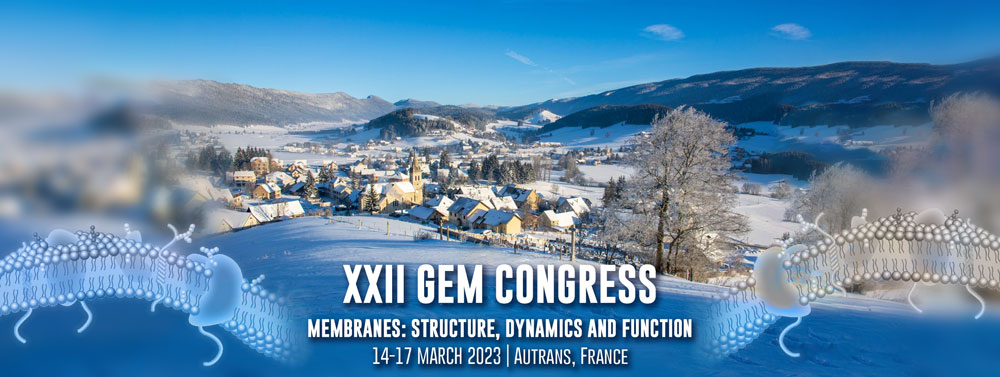Speaker
Description
Solid-state NMR investigation of the synergistic action of magainin antimicrobial peptides
Ahmad Saad, Jesus Raya, Elise Glattard, Burkhard Bechinger
Membrane Biophysics and NMR, Institut of Chemistry (UMR-7177), 1, rue Blaise Pascal Universite de Strasbourg/CNRS, 67000 Strasbourg, FRANCE
Abstract:
Magainin and PGLa are cationic, amphipathic antimicrobial peptides isolated from the skin of Xenopus Laevis African frog, known to interfere with the barrier function of the bacterial membrane and thereby cause bacterial killing. They adopt alpha-helical structures in membrane environments and can disrupt the lipid bilayer organization and ordering. When added as a mixture, they show enhanced synergistic activities in both antimicrobial assays as well as biophysical experiments1,2. Several models have been proposed to understand the synergistic behavior between PGLa and magainin 2, however, the mechanism behind this is still elusive. Recently we observed the formation of mesophase arrangements for PGLa and magainin 2 along the membrane surface. Therefore, our objective is to elaborate a high-resolution study at molecular level of the peptide-lipid assemblies to understand the interactions behind these supramolecular structures, and to decipher the mechanism of synergism between the two peptides.
In the present work, we show a structural analysis of the interaction between magainin and a liposome model that mimics bacterial membranes, composed of POPE:POPG (3/1 molar) lipids using MAS solid-state NMR. We study the secondary structure, insertion, and dynamic of the uniformly 13C-15N labeled peptides on specific positions in the lipid bilayer. Experimental chemical shift analysis of 13C indicates an alpha-helical conformation of magainin. While the lack of correlations between peptide and lipid acyl chain signals in HETCOR experiment reveals that the peptide is not inserted in the hydrophobic core of the membrane and relies on the water lipid interface. Furthermore, signal intensities analysis of CP and INEPT experiments show that the peptides undergo isotropic motion in the liquid crystalline phase, while the system becomes more rigid in presence of the equimolar peptides mix.
References:
1. A. Marquette, B. Bechinger ; Biomolecules, 2018, 8, 18
2. B. Bechinger, D. Juhl, E. Glattrad, C. Aisenbrey; Front. Med. Technol., 2020,2,615494

